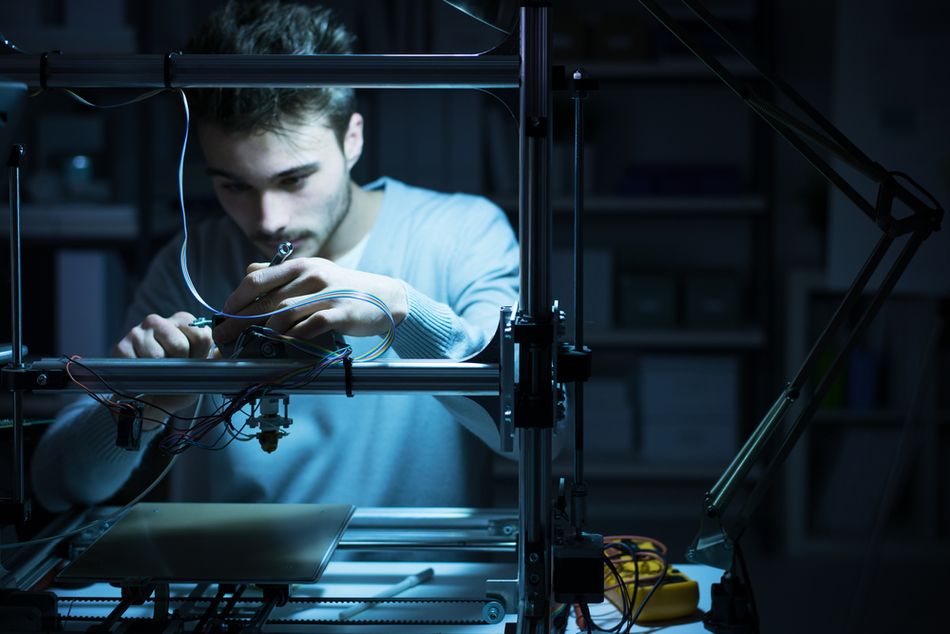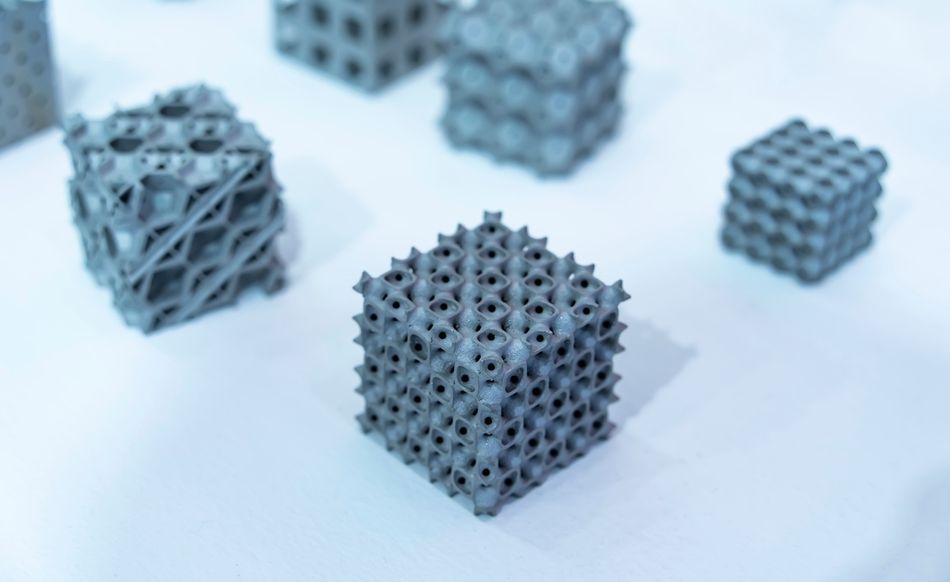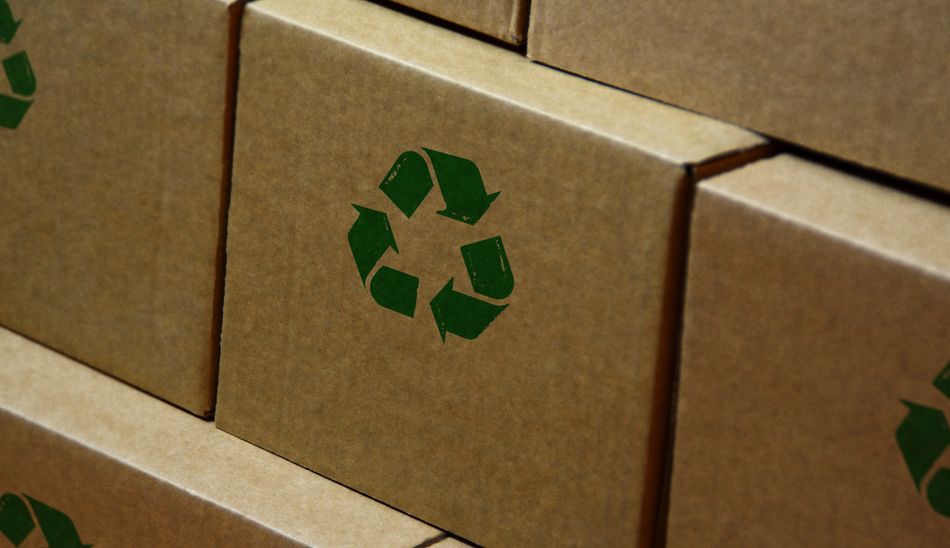Benefits of 3D Printing for Engineers and Technical Professionals
The benefits of 3D printing can be exploited by engineers, with high-quality hardware and materials leading to new products across diverse industries
Imagine being able to design a part in CAD today and hold a physical prototype of it tomorrow. This is the reality that 3D printing in engineering has created. The benefits of 3D printing (also known as additive manufacturing) are transforming how engineers and technical professionals develop products. In the past, creating a prototype or custom component could take weeks and significant budget due to machining or tooling. Today, digital design engineers and hardware developers can 3D print prototypes in-house within hours, dramatically accelerating development cycles.
Additive manufacturing’s advantages go beyond speed. Engineers are finding that 3D printing reduces the cost barrier for prototyping and enables fabrication of complex shapes that traditional machining cannot handle. Whether it’s an electronics engineering student printing a project enclosure, or an R&D team iterating a product design, the engineering applications of 3D printing are vast and continually growing.
In this guide, we delve into the key benefits and practical implementations of 3D printing for engineers and technical professionals. We will cover how additive manufacturing speeds up prototyping, cuts costs, and allows innovative design solutions. By the end, you’ll understand not only what advantages 3D printing offers, but how to leverage them in engineering projects.
Understanding 3D Printing in Engineering
3D printing, or additive manufacturing, is a process of building three-dimensional objects layer by layer from a digital model. Unlike traditional subtractive manufacturing (cutting or milling from solid blocks) or molding (which requires custom molds), 3D printing adds material only where needed. This fundamental difference gives 3D printing several inherent advantages for engineers:
No Specialized Tooling: A 3D printer uses a general process (depositing or solidifying material) directed by software. No custom mold or cutting tool is required for each design, so setup and tooling costs are virtually zero.[1] Engineers can go directly from a CAD design to a part, which is ideal for prototypes and custom components.
Digital Flexibility: Because the process is driven by digital files, it’s easy to modify designs. If a design change is needed, one simply updates the CAD model and prints again. This means design iterations can be turned around extremely fast, often in a matter of days or even hours. In contrast, traditional methods might require retooling or re-machining that takes weeks.
Variety of Materials: Modern 3D printers can fabricate parts in plastics, photopolymer resins, and even metals and composites. Engineers can choose materials ranging from standard ABS or nylon to carbon-fiber reinforced polymers and stainless steel, depending on the application. This versatility allows both prototype-grade parts and end-use, durable components to be printed.
According to the American Society of Mechanical Engineers (ASME), additive manufacturing has become an integral technology in product development, used more frequently now for production of finished parts in addition to prototypes. 88% of surveyed engineers use 3D printing in some capacity, and 40% are even using it to produce end-use products. These numbers underscore how understanding 3D printing is now essential for engineering professionals.
Key Benefits of 3D Printing for Engineers
In engineering projects, 3D printing offers several key benefits over traditional manufacturing methods. Here we break down the major advantages and how they impact product development and technical workflows.
1. Rapid Prototyping and Manufacturing Speed
One of the key advantages of 3D printing is speed. It enables rapid prototyping, turning digital designs into physical objects much faster than traditional methods like machining or injection molding, which can take weeks. Companies like Audi use it to accelerate design verification for complex parts, allowing engineers to test form, fit, and function sooner.
Because 3D printing requires no retooling, design changes can be implemented quickly. A flaw in a prototype can be addressed by simply modifying the CAD file and printing a revised version within days. This agility contrasts with injection molding, where modifications require expensive and time-consuming tooling adjustments.
Rapid prototyping also helps detect design flaws early, reducing costly changes later in development. By enabling frequent, low-cost testing, 3D printing minimizes risks and shortens time-to-market. Surveys show that reduced lead time is one of its biggest advantages, helping companies stay competitive through faster innovation.
The following table highlights how rapid prototyping with 3D printing compares to conventional prototype fabrication:
Aspect | Traditional Prototyping (CNC/Molding) | 3D Printing (Additive) |
Lead time | Long: often weeks for outsourcing or toolmaking | Short: often hours or days per part |
Cost per iteration | High: new tooling or setup for each design change | Low: no tooling; just material and machine time |
Design changes | Inflexible: costly and time-consuming to modify once fabrication starts | Flexible: easy to adjust CAD model and reprint quickly |
Complexity constraints | Geometries may require special fixtures or multiple parts | Can print complex shapes in one piece: no extra effort for complexity |
Waste | Significant material waste: cutting away material | Minimal waste: additive uses only needed material |
Best for | Mass production after design finalization: economies of scale | Prototyping & low-volume runs: iterative development |
As shown, 3D printing excels at fast, flexible prototyping. It’s important to note that for high-volume manufacturing, traditional methods may still be more economical per part, but during the prototype and design phase, additive manufacturing is the clear winner in agility.
Recommended reading: PLA Print Speed: Best Print Speed Settings and More
2. Lower Costs for Prototyping and Custom Production
3D printing offers major cost advantages in engineering, particularly for low-volume production.
No Tooling Costs: Traditional manufacturing requires expensive molds or fixtures, often costing thousands of dollars upfront. 3D printing eliminates this expense, allowing for cost-effective single-part production or short runs. Engineers can print a prototype for just material and machine time costs, avoiding large initial investments.
Cheaper Iterations: Since design changes don’t require new tooling, engineers can test multiple versions affordably. A single CNC-machined prototype might cost hundreds of dollars, while a 3D-printed version is often far cheaper. More iterations lead to a refined final design without excessive spending.
Economical Low-Volume Production: For runs up to a few hundred parts, 3D printing is often cheaper than traditional methods, which only become cost-effective at higher volumes.[2] This makes it ideal for pilot production, custom components, and bridging to mass manufacturing.
Reduced Inventory and Waste: On-demand printing minimizes storage costs and material waste. Engineers can produce parts as needed, reducing excess stock and lowering the risk of obsolescence.
While material costs per kilogram may be higher than raw stock, 3D printing reduces tooling expenses, lowers financial risk, and provides an affordable solution for prototyping and custom production.
3. Design Freedom: Complex Geometries and Part Consolidation
Additive manufacturing removes many traditional design constraints, enabling engineers to create highly optimized parts.
Complex Geometries at No Extra Cost: 3D printing allows for intricate shapes, internal cavities, and lattice structures that machining or molding would struggle to produce. Features like cooling channels inside components or organic, weight-efficient designs can be printed without additional manufacturing complexity.
Part Consolidation: Engineers can merge multi-piece assemblies into a single printed part, reducing assembly requirements and failure points. For example, GE’s 3D-printed fuel nozzle replaced 20 separate components, making it lighter and more durable.
Topology Optimization and Lightweighting: 3D printing enables optimized, skeletal structures that reduce weight while maintaining strength. Aerospace and automotive industries use this to improve performance and efficiency by incorporating lightweight lattice supports.[3]
Impossible Objects: Moving assemblies, interlocking parts, and bio-inspired designs can be printed in one go, bypassing traditional manufacturing limitations. Engineers can focus on function rather than manufacturability, opening up new possibilities for product innovation.
Understanding Design for Additive Manufacturing (DfAM) is key to unlocking these benefits. By leveraging 3D printing’s capabilities, engineers can push design boundaries, creating stronger, lighter, and more efficient components.
4. Customization and Personalization of Parts
Mass customization is a key advantage of 3D printing, enabling design variations without extra setup costs. Engineers can modify a CAD file and print unique parts on demand, making it ideal for one-off components, replacements, or user-specific adaptations like medical devices.
Customization also improves ergonomics. In prosthetics and wearables, 3D scanning allows for perfectly fitted parts, enhancing comfort and performance. Similarly, electronics enclosures or industrial tools can be personalized without added expense.
Small-batch production benefits as well. Engineers can print short runs of varied designs efficiently, avoiding costly tooling. If testing 50 sensor housings with slight differences, all can be printed at once with no extra setup.
Mass customization also supports product localization. A single base design can be adjusted for different regions or customer needs, avoiding complex retooling. Since 3D printing removes the cost penalty for variations, engineers can optimize each design, enhancing performance and customer satisfaction.
5. Reduced Waste and Environmentally Friendly Manufacturing
Sustainability is becoming a key factor in engineering decisions, and 3D printing offers several environmental benefits over traditional manufacturing.
Additive manufacturing minimizes material waste by building objects layer by layer, unlike CNC machining, which removes material from a larger block. While some waste still occurs, such as support structures or unused powder, it is significantly lower. In metal 3D printing, up to 98% of unused powder can be recovered, reducing waste.[4]
Energy efficiency and carbon footprint reduction are also advantages. 3D printing enables lightweight designs that save energy during a product’s use, especially in aerospace and automotive applications. Additionally, localized production cuts shipping emissions, as parts can be printed on-site rather than transported globally.
On-demand production further enhances sustainability. Unlike traditional manufacturing, which often requires large production runs, 3D printing allows companies to produce only what is needed, reducing overproduction and excess inventory waste.
Key sustainability benefits of 3D printing:
Less material waste: Builds only what’s needed, reducing scrap.
Energy savings: Lightweight parts improve efficiency in transport and machinery.
Localized production: Cuts shipping emissions by printing closer to end-use.
Recycled materials: Some filaments and powders can be reused, reducing waste.
Though energy-intensive in some cases, additive manufacturing supports more sustainable engineering by reducing waste, optimizing material use, and enabling smarter production strategies. As sustainability becomes a greater priority, 3D printing offers a valuable tool for engineers seeking greener solutions.
Recommended reading: Reducing the Carbon Footprint of Additive Manufacturing
6. Improved Communication and Risk Reduction
Beyond time, cost, and design, 3D printing offers soft benefits in engineering, such as the following:
- Improved Communication: A physical model helps convey design concepts more clearly than CAD drawings, making it easier to get feedback from non-engineers like clients or marketing teams. This leads to better alignment and faster approvals.
- Enhanced Collaboration: Engineers from different disciplines can gather around a 3D-printed prototype to discuss improvements, identifying issues that may not be apparent in digital designs.
- Early Testing and Validation: Prototypes allow for early testing, helping identify issues (e.g., fit or function) before committing to full production. This risk mitigation reduces the chance of costly failures later on.
- Educational Value: For students, 3D printing offers hands-on experience and teaches design for manufacturing. It enhances project development and equips future engineers with valuable industry skills.
These benefits foster collaboration, risk reduction, and skill-building, driving innovation in engineering.
Engineering Applications of 3D Printing
3D printing offers engineers a wide range of practical applications across various stages of product development and manufacturing:
Rapid Prototyping
Concept Models & Fit-Check Prototypes: Engineers can quickly create early-stage models to visualize scale and fit before finalizing designs, helping to evaluate aesthetics and functionality.
Functional Prototypes: As designs progress, 3D printing allows for creating prototypes that closely mimic the final product's material properties, enabling functional testing without expensive tooling.
Visual and Ergonomic Models: Industrial designers use 3D-printed models to assess user ergonomics and the visual appeal of a product, ensuring it meets user needs and expectations.
Custom Tools and Manufacturing Aids
Assembly Jigs & Fixtures: Engineers can design custom jigs and fixtures for assembly and welding, improving consistency and speeding up production.
Inspection Fixtures: 3D printing allows for precise test gauges and fixtures tailored to specific product geometries, enhancing quality control.
Robotic Tooling: Custom grippers and tool attachments are created for robots, increasing efficiency in automation processes by reducing handling damage.
Low-Volume Production
Bridge Manufacturing: 3D printing serves as an intermediate solution before injection molding, producing small batches for early market release or testing.
Limited-Series & Niche Products: Industries with low-volume demands, like aerospace or medical devices, can leverage 3D printing to produce custom parts or limited runs, reducing cost and production time.
Spare Parts & Repairs: Companies can print spare parts on-demand, reducing downtime for machinery, especially for hard-to-find or outdated parts.
These advancements demonstrate how 3D printing has evolved from a prototyping tool to a vital asset in manufacturing and product development. Looking forward, future trends include multi-material printing, metal additive manufacturing, and large-scale production capabilities, further enhancing the speed, versatility, and efficiency of 3D printing for engineers.
Limitations of 3D Printing for Professionals
While 3D printing offers numerous benefits to engineers, there are still several limitations that can affect its adoption and use in certain applications. One significant challenge is material constraints. Although 3D printing materials like PLA, ceramics, and various resins offer versatility, many do not match the strength, durability, or heat resistance of traditional manufacturing materials. FDM (Fused Deposition Modeling), for example, is limited by the strength of materials like PLA, which may not be suitable for high-performance or structural parts.
Another limitation is the post-processing required to achieve the desired finish. Many 3D printed parts, especially those produced using FDM, require significant post-processing to improve surface quality, strength, or functionality. This can add time and costs to the production process. Additionally, while 3D printing offers rapid prototyping, scaling up production to meet large-volume demands is still challenging. Traditional manufacturing processes like injection molding remain more efficient for mass production.
| Process | Prototyping | Limited Production | Mass Production |
| 3D Printing | $ | $$ | $$$ |
| Subtractive | $$ | $$ | $$ |
| Molding | $$$ | $$ | $ |
The accuracy of 3D printing can also be a limiting factor, particularly when dealing with complex parts. Small tolerances may be harder to achieve with 3D printing compared to conventional methods, limiting its use in precision-critical applications.
Moreover, the cost of high-end 3D printers, specialized materials, and skilled labor can be prohibitive for small businesses or hobbyists. While new technologies and eco-friendly advancements are emerging, 3D printing remains a niche solution for certain engineering applications, particularly where traditional manufacturing processes offer better cost-effectiveness and material properties.
Conclusion
3D printing has become a transformative tool for engineering and technical professionals, offering benefits like faster iteration, reduced development risks, and the ability to create complex designs that traditional methods can't achieve. It allows engineers to experiment with bold ideas—such as intricate lattice structures, custom-fit parts, and consolidated assemblies—while keeping costs low and reducing prototyping times.
Real-world applications, from automotive companies using 3D-printed assembly tools to aerospace firms employing printed engine components, show how 3D printing is delivering significant results in performance, efficiency, and time-to-market.
As the technology evolves, engineers can expect faster printers, more materials (including integrated electronics), and greater adoption in production. The next generation of engineers enters the field with 3D printing as a core skill, enabling them to approach challenges with the question, "What’s the best way to make this with the tools available?"
In conclusion, additive manufacturing empowers engineers to design without limits and manufacture with agility. Whether for a student printing an enclosure or a manufacturing engineer optimizing a production line, 3D printing offers tangible benefits that lead to better engineering outcomes.
Frequently Asked Questions (FAQ)
How does 3D printing benefit engineers in prototyping?
3D printing accelerates prototyping by enabling rapid iteration of designs. Engineers can quickly produce functional prototypes, reducing development time and costs. It also allows for complex geometries and custom-fit parts that would be difficult or impossible to create with traditional manufacturing methods.
Can 3D printing improve manufacturing processes?
Yes, 3D printing is increasingly used to create custom tools, jigs, and fixtures for production lines. This leads to more efficient assembly, reduces downtime, and allows for quick design modifications without waiting for traditional tooling.
What industries benefit from 3D printing?
Industries like automotive, aerospace, medical devices, and consumer electronics benefit from 3D printing. It supports rapid prototyping, custom parts production, and even low-volume manufacturing, helping companies reduce costs and accelerate innovation.
Is 3D printing suitable for mass production?
While 3D printing excels in prototyping and low to medium-volume production, advances in speed and material options are making it increasingly viable for certain mass production applications, particularly for small or custom parts.
How is 3D printing shaping the future of engineering?
As 3D printing technology improves, it’s expected to play a key role in the future of engineering by enabling faster design cycles, more innovative solutions, and greater integration with digital tools, enhancing the overall efficiency and flexibility of engineering processes.
References
[1] Jiménez M, Romero L, Domínguez IA, Espinosa MD, Domínguez M. Additive manufacturing technologies: an overview about 3D printing methods and future prospects. Complexity. 2019;2019(1):9656938.
[2] Attaran M. The rise of 3-D printing: The advantages of additive manufacturing over traditional manufacturing. Business horizons. 2017 Sep 1;60(5):677-88.
[3] VOICU AD, Hadăr A, Vlăsceanu D. Benefits of 3D printing technologies for aerospace lattice structures. Scientific Bulletin'Mircea cel Batran'Naval Academy. 2021 Jan 1;24(1).
[4] Powell D, Rennie AE, Geekie L, Burns N. Understanding powder degradation in metal additive manufacturing to allow the upcycling of recycled powders. Journal of Cleaner Production. 2020 Sep 20;268:122077.





